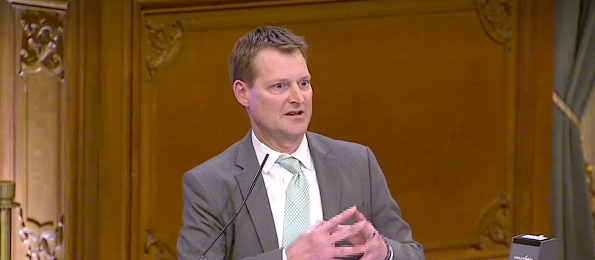
The Board of Supes hearing Tuesday on the city’s response to the COVID-19 crisis demonstrated a key policy divide between the Breed Administration and the progressive board members:
The progressives want to take control of as many hotel rooms and vacant apartments as possible and move homeless people off the streets. The Breed administration is taking a much more limited approach that features the large-scale shelter model.

The clearest message that we got from the hearing was that the Human Services Administration and the Department of Public Health are not at all on the same page when it comes to the homeless population.
In fact, HSA Director Trent Rhorer said repeatedly, on the record, that his agency was not trying to get hotel rooms or other individual housing units for homeless people. That’s not a priority for his office.
Instead, he said, DPH had recommended that the city try to get people living on the streets into shelters, where they can better access services.
But Dr. Tomas Aragon, the health officer for DPH, later testified that the department from a disease-prevention perspective thinks the city should do everything possible to get people into private rooms.
Under questioning from Sup. Matt Haney, Rhorer said that “the DPH guidance is not to put every homeless person in a hotel room with no services … they prefer getting people on the streets into shelters where they are safe. We are following DPH guidelines.”
Rhorer said that his priority was to deal with the 19,000 people living in single-room occupancy hotel room, often in close quarters. “At the next phase,” he said, the city could worry about people living on the streets.
Help us save local journalism!
Every tax-deductible donation helps us grow to cover the issues that mean the most to our community. Become a 48 Hills Hero and support the only daily progressive news source in the Bay Area.
Rhorer said that some of the people on the streets have acute needs for mental-health and substance-abuse services. He even said that the city wouldn’t want to put someone with drug addiction in a hotel room because they might break quarantine to go buy drugs on the street.
(Let’s remember we aren’t talking about quarantines here – that’s a different issue. We are talking about taking people who are living on the streets and bringing them inside.)
As Sup. Dean Preston noted, there are thousands of unhoused people who don’t need intensive social work; they just need a place to live and they are very vulnerable, either on the streets or in shelters, to exposure to the virus.

A few minutes later, Haney asked Dr. Aragon the same question – and got a very different answer.
“From a disease-prevention perspective, having your own room is the best,” Dr. Aragon said.
Shelters are by definition crowded indoor spaces which may lack adequate room for social distancing (beds have traditionally been about three feet apart or less) and adequate facilities for regular handwashing and sanitation.
“Not only did the director of HSA say that it made sense to do the wrong thing,” Haney said, “he told us that he was following your directives.”
Aragon was clear: Rhorer’s position did not reflect DPH directives. He said that HSA had “misinterpreted” what public health official said and politely suggested that since the shelter-in-lace order had been written in six hours across seven counties, it was possible that HSA folks had misread it.
Preston noted that Dr. Aragon and the director of public health have considerable power in an emergency. There are, he said, more than enough currently vacant housing units and hotel rooms to house every homeless person in the city.
Some landlords are stepping up and volunteering to help out, he said, but if there aren’t enough volunteers “then we are going to have to figure out how to take those units.”
You can watch the video here. Rhoer starts at about 3:50, Dr. Aragon a little after 5:00.

